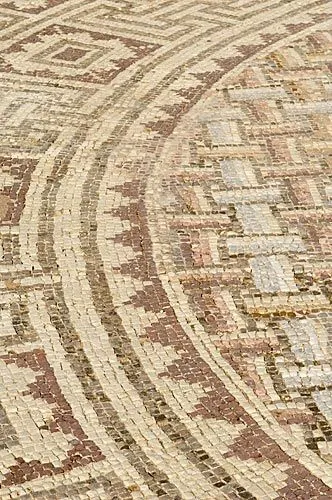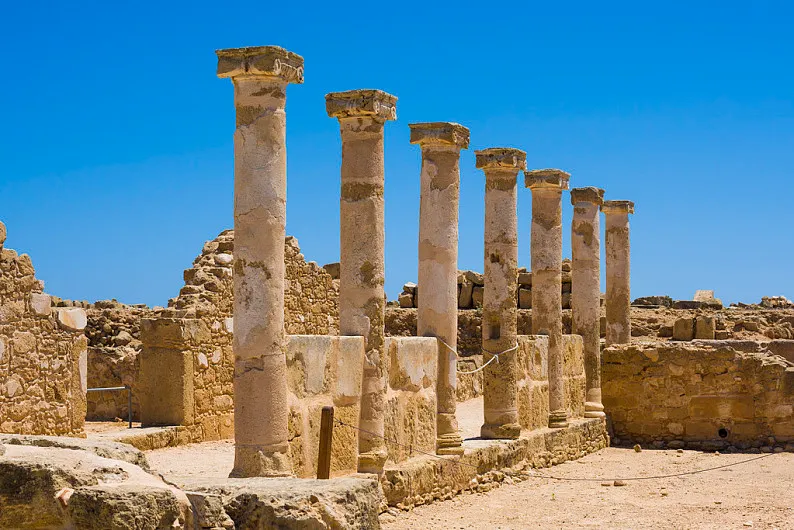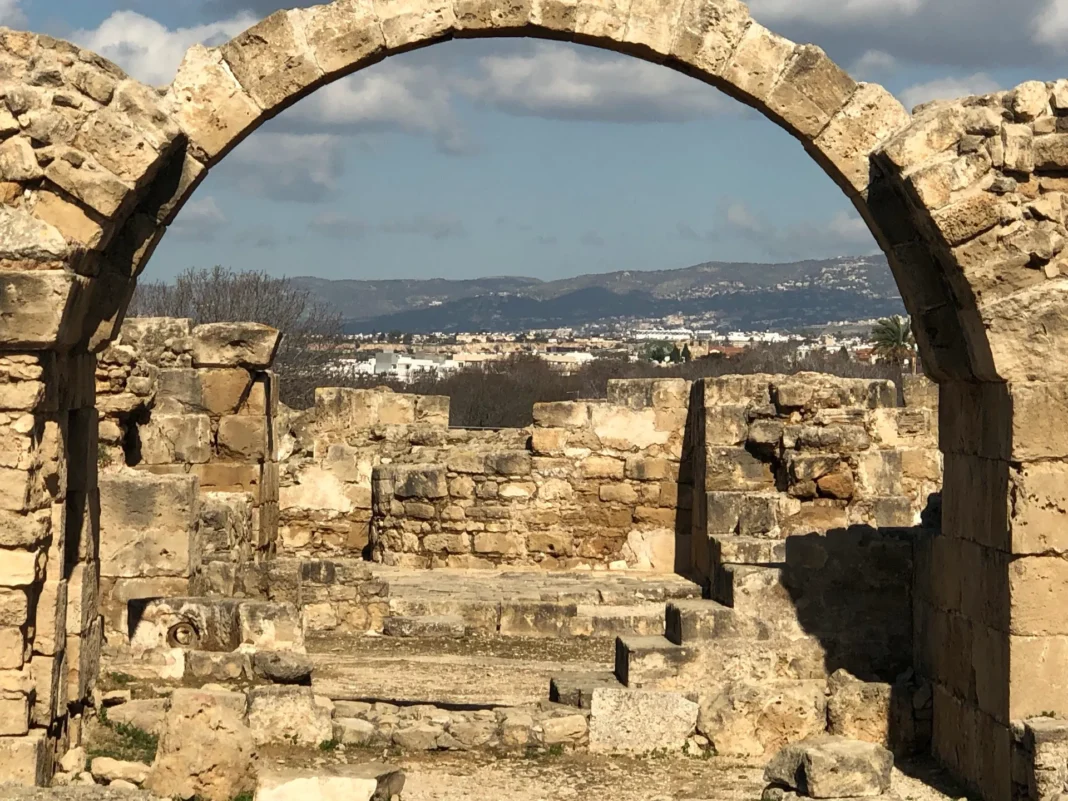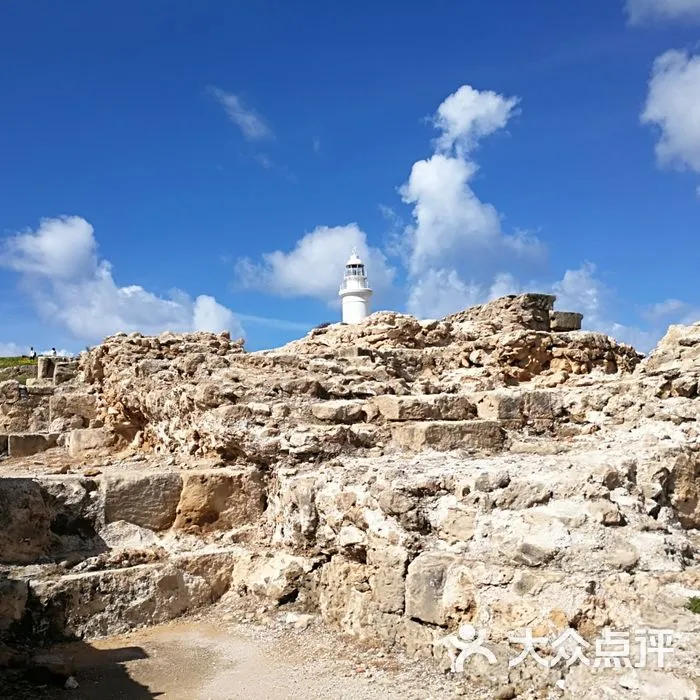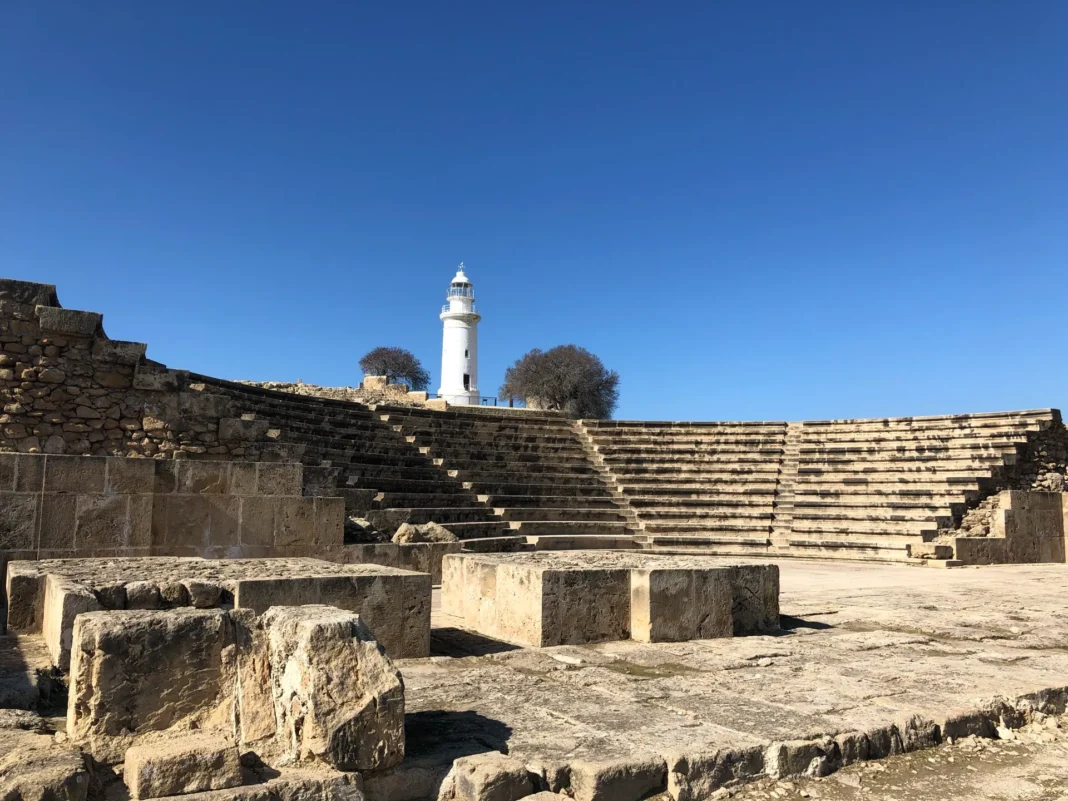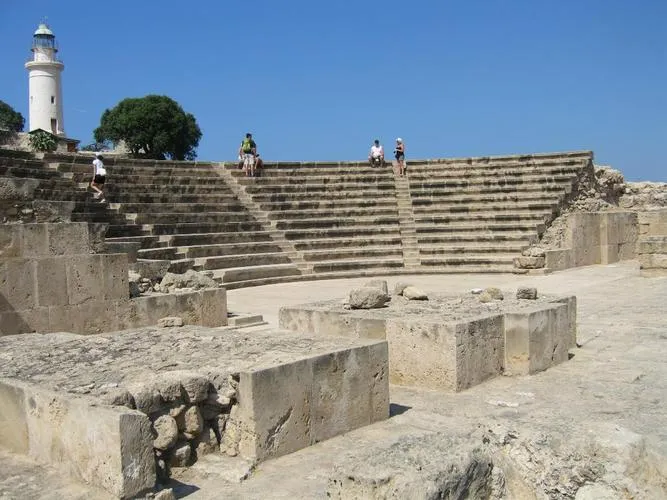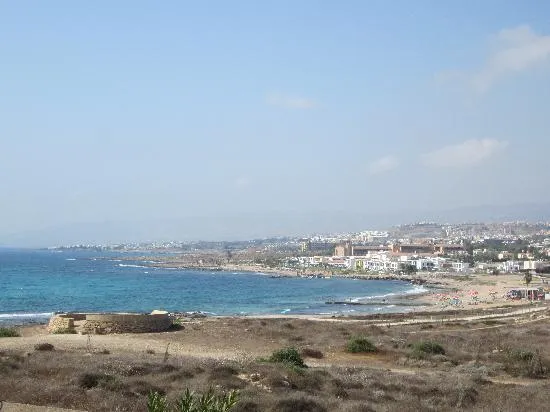Paphos Archaeological Park, a UNESCO World Heritage Site, is an open-air museum that offers a captivating glimpse into the rich and diverse history of Cyprus. Located in the coastal city of Paphos, this expansive park showcases a remarkable collection of archaeological treasures spanning centuries, from the prehistoric era to the Middle Ages. As you wander through the park’s sun-drenched paths, you’ll encounter remnants of ancient villas, theaters, temples, and tombs, each whispering tales of bygone civilizations. The park’s most celebrated attractions are its exquisite mosaics, which adorn the floors of several Roman villas, depicting scenes from mythology, daily life, and the natural world with astonishing detail and artistry.
Paphos Archaeological Park is a must-visit destination for anyone seeking to explore the cultural heritage of Cyprus. Whether you’re a history buff, an art enthusiast, or simply curious about the island’s past, this remarkable site will transport you back in time and leave you with a profound appreciation for the ingenuity and resilience of the Cypriot people.
Exploring the Park’s Highlights
The park is extensive, so plan your visit carefully to ensure you see the highlights that most interest you. Comfortable shoes, sunscreen, and a hat are essential, especially during the hot summer months. Here’s a closer look at some of the park’s most notable attractions:
The House of Dionysos
This grand Roman villa is renowned for its stunning collection of mosaics, which depict scenes from Greek mythology, including the life and adventures of the god Dionysos. The mosaics are remarkably well-preserved, showcasing the intricate craftsmanship and artistic skill of the ancient artisans.
The House of Theseus
Another impressive Roman villa, the House of Theseus boasts a series of mosaics depicting scenes from the labors of Hercules and the myth of Theseus and the Minotaur. The villa also features a large peristyle courtyard surrounded by columns, offering a glimpse into the luxurious lifestyle of the Roman elite.
The Tombs of the Kings
This necropolis, dating back to the Hellenistic and Roman periods, is a vast complex of underground tombs carved into the rock. Although named the Tombs of the Kings, it’s believed that high-ranking officials and wealthy citizens were buried here rather than royalty. The tombs are impressive in their scale and architectural detail, with some featuring Doric columns, frescoes, and courtyards.
The Odeon
This well-preserved Roman theater, built in the 2nd century AD, is still used today for cultural events and performances. The theater’s semicircular auditorium, carved into the hillside, offers stunning views of the surrounding landscape.
The Saranta Kolones Castle
This medieval fortress, built in the 7th century AD, stands guard over the harbor. Although now in ruins, the castle’s imposing walls and towers offer a testament to its former strength and strategic importance.
Tips for Visiting Paphos Archaeological Park
- Allow ample time: The park is large, and there’s a lot to see. Plan to spend at least half a day exploring the site.
- Wear comfortable shoes: You’ll be doing a lot of walking, so make sure you have comfortable footwear.
- Bring sunscreen and a hat: The Cypriot sun can be intense, especially during the summer months.
- Stay hydrated: Carry a water bottle and drink plenty of fluids.
- Consider a guided tour: A guided tour can provide valuable insights into the park’s history and significance.
- Check the opening hours: The park’s opening hours vary depending on the season.
- Purchase a combination ticket: If you plan to visit other archaeological sites in Paphos, consider purchasing a combination ticket, which offers discounted admission to multiple attractions.
Beyond the Park: Exploring Paphos
While Paphos Archaeological Park is undoubtedly the city’s crown jewel, there’s much more to discover in this charming coastal town. Here are a few suggestions for further exploration:
- Paphos Harbor: Stroll along the picturesque harbor, lined with cafes, restaurants, and shops.
- Kato Paphos: Explore the modern heart of Paphos, with its lively bars, clubs, and beaches.
- Byzantine Museum: Admire a collection of religious icons and artifacts at this fascinating museum.
- Aphrodite’s Rock: Visit the legendary birthplace of the goddess Aphrodite, a stunning sea stack just outside Paphos.
- Akamas Peninsula: Hike or bike through this rugged and scenic national park.
Preserving Cyprus’s Cultural Heritage
Paphos Archaeological Park is not only a testament to Cyprus’s rich history but also a reminder of the importance of preserving our cultural heritage for future generations. The park’s ongoing conservation efforts ensure that these precious archaeological treasures will continue to inspire and educate visitors for years to come.
FAQs About Paphos Archaeological Park
Q: What is the best time of year to visit Paphos Archaeological Park?
A: The best time to visit is during the spring (March-May) or fall (September-November) when the weather is mild and pleasant. The summers can be very hot, so be prepared for high temperatures if you visit during this time.
Q: How much does it cost to enter the park?
A: The entrance fee is €4.50 for adults and €2.25 for children and students.
Q: Are there any guided tours available?
A: Yes, guided tours are available in several languages. You can book a tour in advance or join one at the park entrance.
Q: Can I take photographs inside the park?
A: Yes, you can take photographs for personal use. However, flash photography is not permitted inside the villas and tombs.
Q: Is there a cafe or restaurant at the park?
A: Yes, there is a cafe near the entrance where you can purchase snacks and drinks.
Q: How long does it take to explore the entire park?
A: The park is quite large, so it can take several hours to explore everything. If you’re short on time, focus on the highlights, such as the House of Dionysos, the House of Theseus, and the Tombs of the Kings.
Conclusion
Paphos Archaeological Park is a treasure trove of history and culture, offering a unique opportunity to step back in time and experience the wonders of ancient Cyprus. From the exquisite mosaics of the Roman villas to the imposing Tombs of the Kings, the park’s diverse attractions will captivate and inspire visitors of all ages. Whether you’re a seasoned history buff or simply curious about the island’s past, a visit to Paphos Archaeological Park is an unforgettable experience that will leave you with a deeper appreciation for the rich tapestry of Cypriot heritage.


